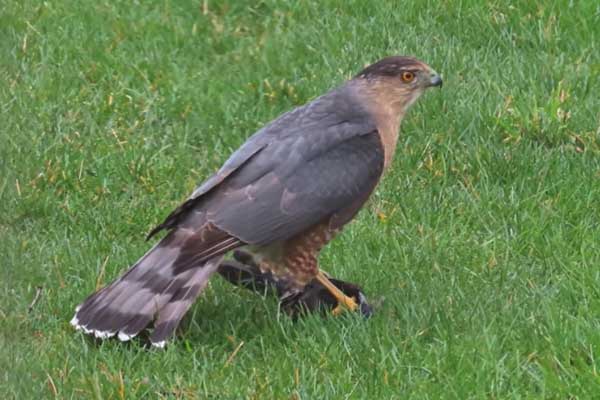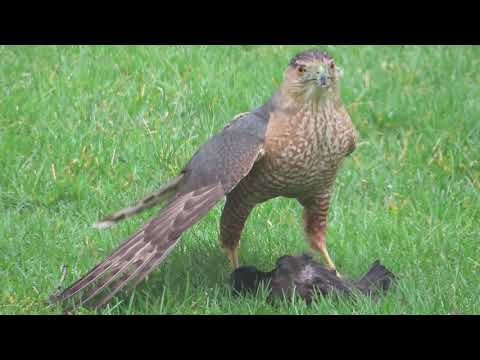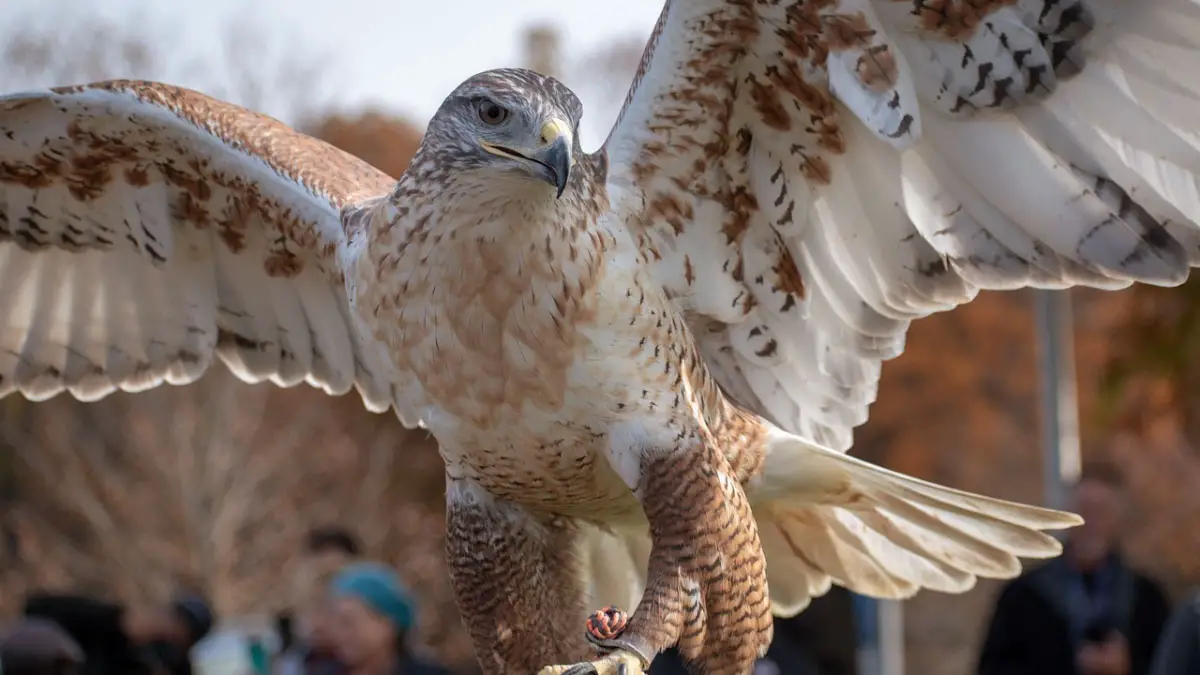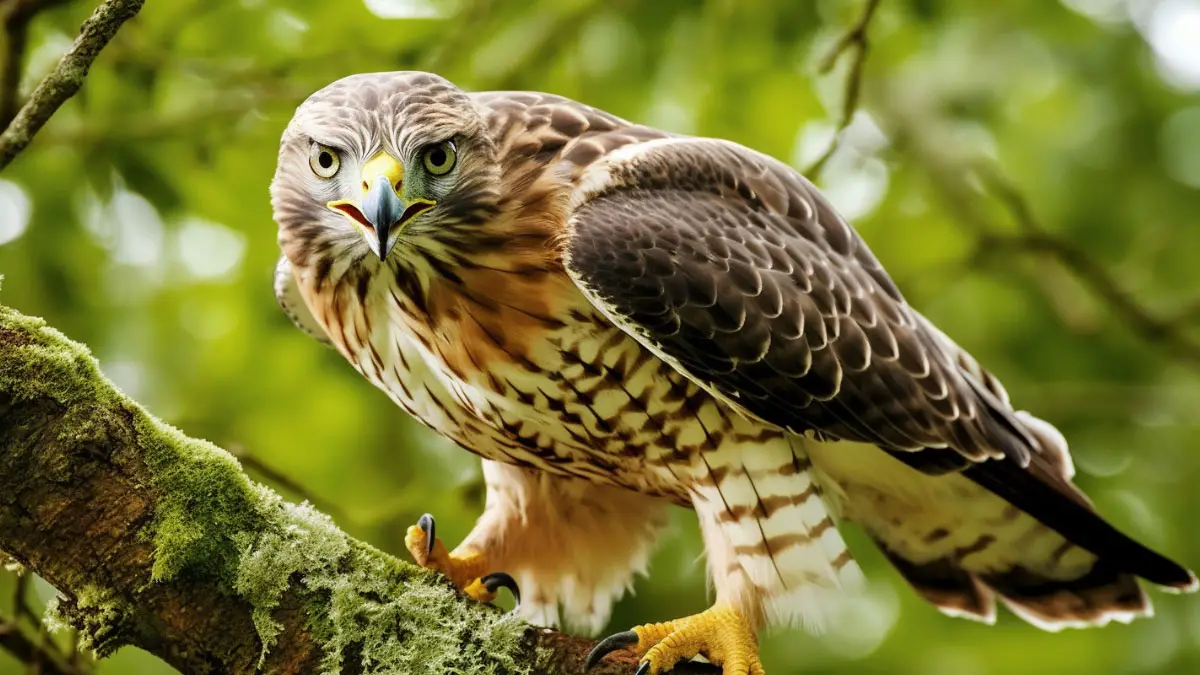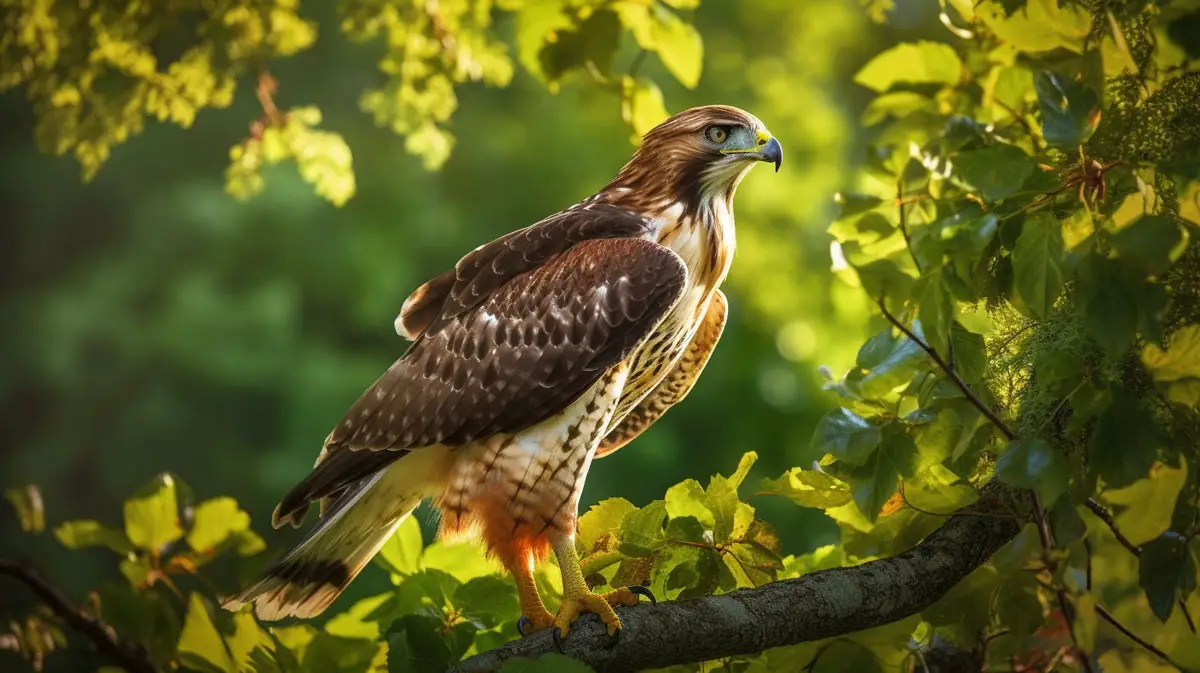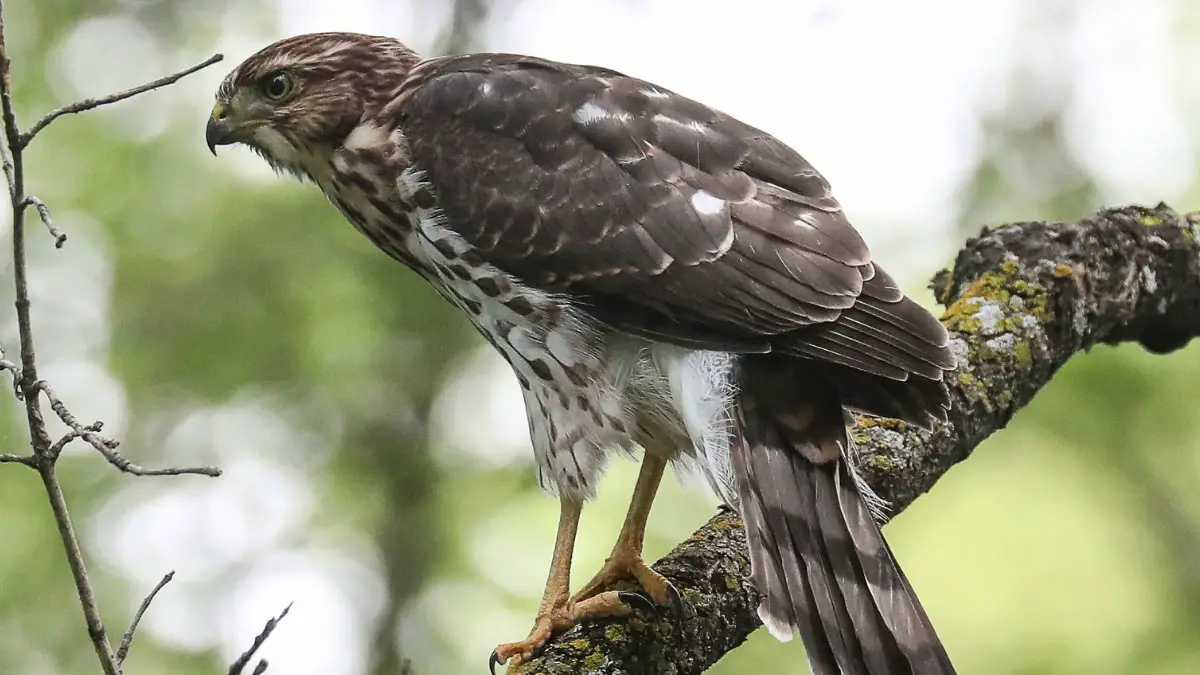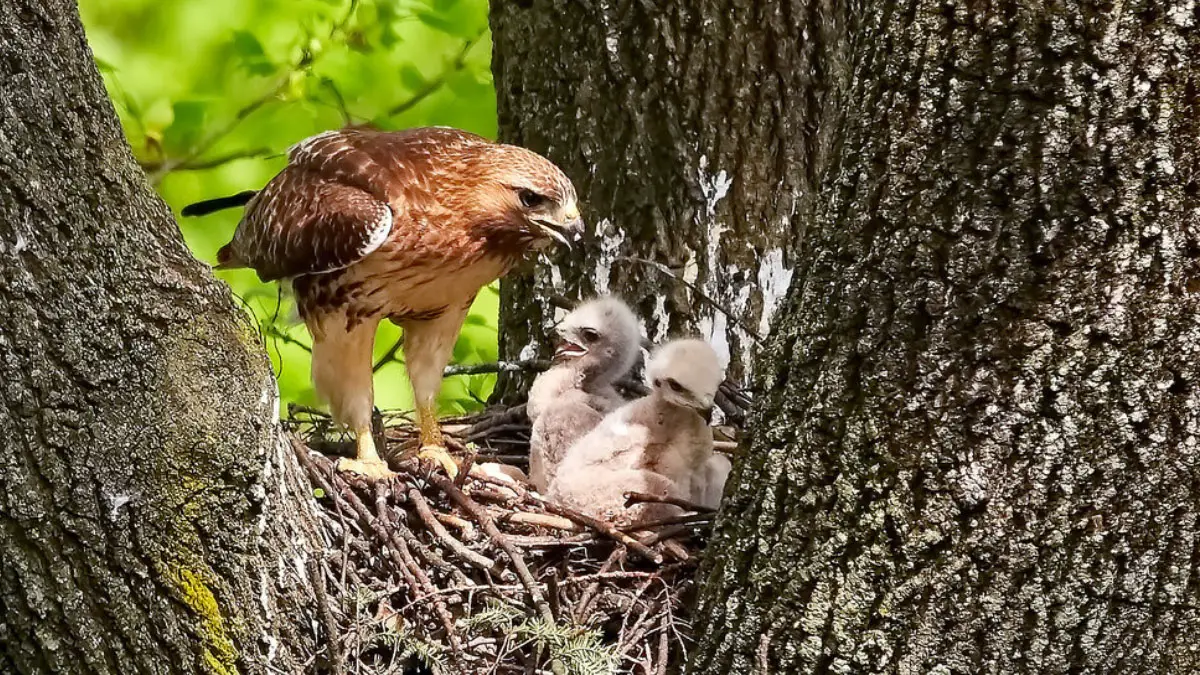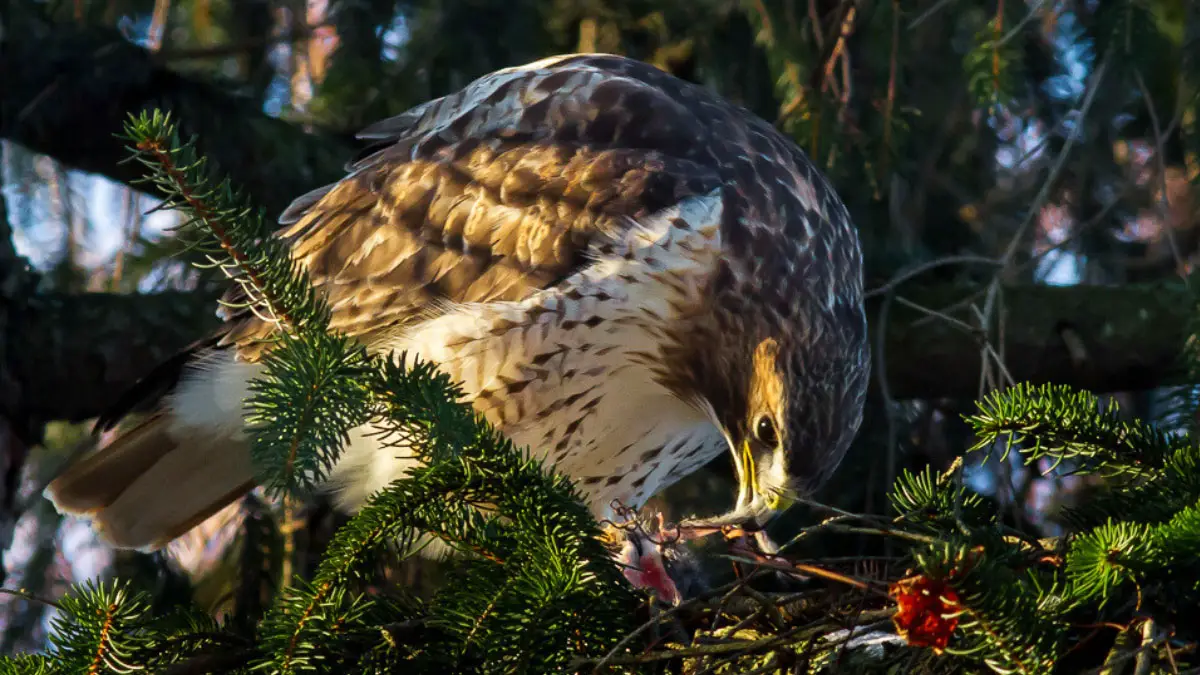If you rear or feed birds in your yard, sooner or later, you’ll come to the painful truth that one of the enemies you need to save them from is the hawk. If you don’t know much about birds, birds feeding on other birds might sound like something impossible.
Do hawks eat other birds? Yes, hawks eat other birds. Hawks are birds of prey and must hunt small birds, including quails, doves, pigeons, small poultry, etc., for survival. The most common hawks that eat other birds in the US include the Red-Tailed Hawks, Northern Goshawks, Sharp-Shinned Hawks, American kestrel in North America, and the Cooper’s Hawks.
If you’re a birder and want to know more about hawks eating other birds and measures you can take to protect your backyard flock from this predator, read our complete guide below.
Do hawks eat other birds?
Hawks are carnivorous, and so they do eat other birds. This is why you may see hawks attracted to your backyard bird feeders as they look for their next prey. These birds usually target small to medium-sized birds such as doves, robins, songbirds, woodpeckers, chickadees, juncos, etc.
Hawks are opportunistic hunters, and in harsh conditions where food is scarce, they feed on small birds for survival. As we mentioned earlier, the most common hawk species likely to be seen hunting other birds in the US include the Northern Goshawks, Sharp-Shinned Hawks, Cooper’s Hawks, and the American Kestrel.
It is worth noting that hawks are fast and agile fliers and are well adapted to flying around your feeders, trees, birdbaths, buildings, etc., and catch those small, panicked birds.
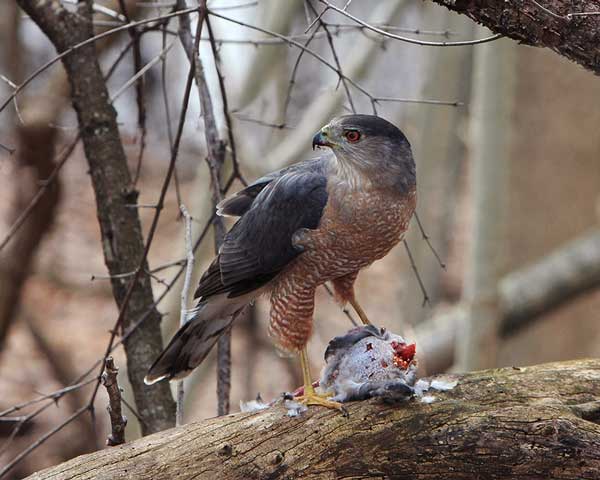
They’re generally well-camouflaged and are known to launch a surprise, deadly attack against their prey from a short range. Ground feeding birds like songbirds that feed on berries from underbrush are always at high risk.
Suburban hawks, on the other hand, utilize an ambush tactic. They use their fantastic eyesight to watch a feeding platform from a small gap in underbrush. And when they spot their target prey, they take flight as they burst through the small opening in a high-speed, surprise attack!
Red-tailed hawks fall under the family of buteos and have also been well documented pursuing birds up to the size of pheasants. The Harris’s Hawk is another buteos that are known to hunt birds and usually hunt cooperatively.
You may feel bad seeing a hawk eating doves, songbirds, and other small birds in your yard. But then again, the bird of prey is just playing its role in the natural food chain (or the circle of life, if you like).
The birds don’t kill more than they need for survival. And studies even suggest that only 10% of their kills are successful. In this 10% of kills, most birds are sick, weak, or old. The hawk simply removes them from the flock by killing them, helping strengthen the other birds.
Some birders knowledgeable about this rule of nature encourage backyard hawks and even take steps to attract them to their yards.
How does a hawk kill other birds?
Hawks are excellent hunters thanks to their body adaptations, including excellent vision and powerful talons. These birds of prey employ different hunting methods to catch prey.
One method involves soaring in the sky while riding in thermals or circling. This enables them to survey the area below until they spot their prey. The predators can easily spot a game from high above, thanks to their keen eyesight, which is 8x better than humans.
Once they spot a pretty, the birds may soar a little more to avoid stressing out the prey and causing it to flee. When it’s time to attack, the hawk will swoop down and latch onto the target using its sharp talons, and that’s it!
Hawks may also hunt birds by hovering over a piece of ground where the prey is found. During hovering, the bird will need to flap its wings rapidly. Once the bird of prey spots a target prey, it pounces down talons first to capture the unlucky bird.
The most common hunting method employed by hawks involves finding a suitable vantage point in a tree branch. It’s here that they sit and wait for the right moment. They use their keen eyesight to survey what’s on the ground. Once they spot prey, they swoop down and catch the target with their powerful talons.
What time of day do hawks hunt other birds?
Hawks are diurnal raptors, meaning they’re active during the day. That said, most hawk species prefer to hunt during the dusk or dawn time of the day. In other words, they like hunting before nightfall, just when daylight has faded.
The reason you’ll find some folks claiming that these predators are nocturnal (hunt at night) is because they see them hunting at dusk. But the fact remains that these birds of prey are 100% diurnal, not nocturnal!
One of the reasons these birds are active during the day is their excellent vision. It works at its when there’s light.
Most of the birds the hawks prey on are nocturnal and come out at dusk. This explains why the hawks will start hunting at sunset—when their prey starts coming out of their nests.
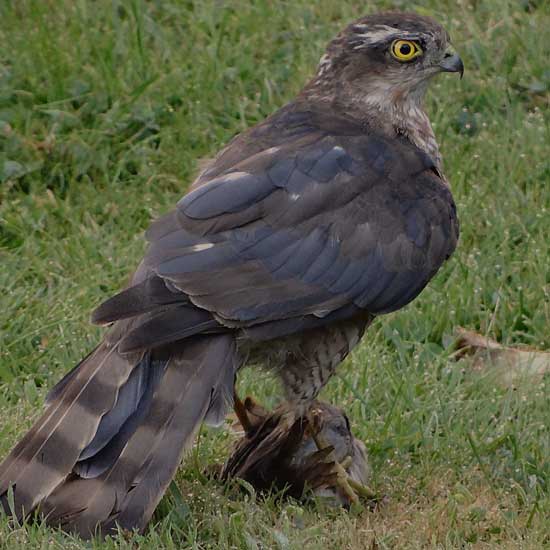
At dusk, their movement is less detectable by their prey due to the reduced sunlight. This increases their chances of hunting their prey
Overall, hawks hunt during sunset or early in the morning. For the rest of the day, you’ll find them circling and gliding in the air or sitting on exposed perches on tree branches.
How do you protect small birds from hawks?
This is your part if you’re worried about hawks preying on your poultry or the birds in your yard. You can take some effective actions to keep your birds safe from the hawks without causing harm to the raptors.
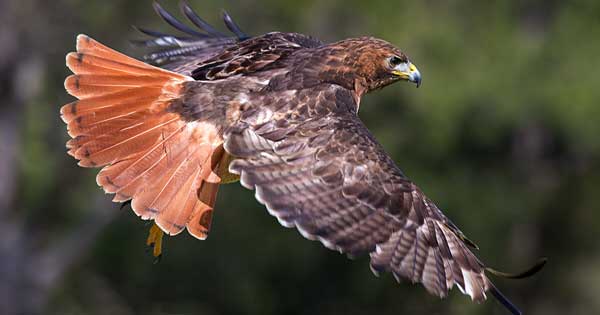
Let’s get a closer look at these measures below.
Provide shelter
One of the most effective ways to protect your backyard birds from hawks is by providing them with natural cover. Some suitable options include thick shrubbery, dense trees, and brush piles. Try placing these shelters within 10ft from the feeders to enable the birds to quickly access them in case of hawk attacks. You may also consider using plants that produce seeds or fruits so the birds can continue feeding while taking cover.
Avoid low/ground feeders
Birds feeding on the ground, e.g., the quails, sparrows, doves, etc., are highly vulnerable to hawk attacks. These birds cannot quickly react to a predator and have limited options on where they can run to hide. Avoiding ground feeders can greatly minimize the chances of these birds falling prey to hawks.
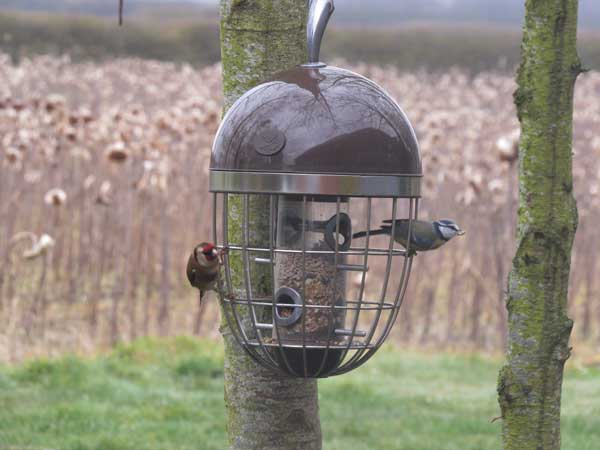
Shield your feeders
You can also keep your backyard birds safe from hawks by placing their feeders in covered areas where the predators can’t easily see them. Some suitable places to consider are under a gazebo, umbrella, awning, or lower tree branches where canopy provides cover from the hawk eyes. You may also consider using covered platform feeders to offer visual shielding from the hawks.
Use cage feeders
You may also want to use feeders designed with wire cages to protect the perches and feeding ports or build a cage around the existing feeder. This will give the small birds easy access to food and security against predators like hawks.
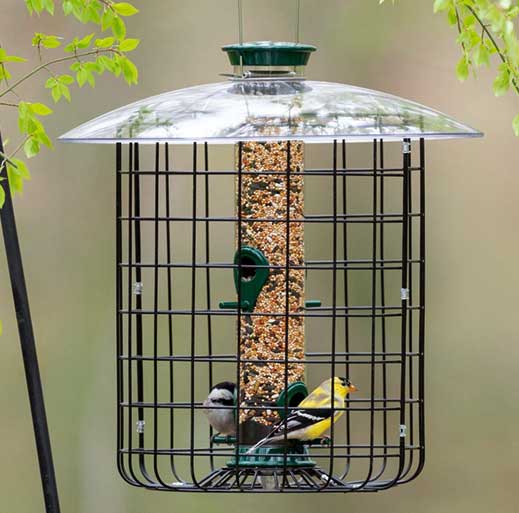
Get rid of strategic hawk points
The reason hawks could be attracted to your yard is that there are suitable hunting grounds where they observe and wait for prey to approach. Examples of such points include tall, sturdy, and mature trees with tree branches where they can comfortably perch. By getting rid of such, you’ll make your yard less inviting, and they may opt to go away.
Get rid of hawk food sources
In addition to eliminating the hawks’ vantage points, you may also consider other food sources that attract them to your backyard. As you may already know, haws don’t just feed on small birds but also on field rodents, large insects, etc. Getting rid of these resources will make your yard a less attractive hunting ground for the birds of prey.
Take down your feeders for some time
So the hawks don’t seem to let go even after you’ve taken all the above measures? How about you try taking down the bird feeders for 1-2 weeks? This will trick the hawks into moving to new hunting grounds. But the small birds will always return when you get the feeders back up. Though the hawks may also return with time, it will take them longer.
Related questions:
The number of birds a hawk eats in a day can vary from 0 to 8 depending on the size of prey, how big the hawk is, and whether it (the hawk) has eaten. The Ferruginous Hawk, for instance, can eat an adult pigeon and stay full for a couple of days.
The same hawk can also eat 8 sparrows to get through a day. Small hawk species like the Coopers can easily get through the day with just one hawk, especially when they feed on larger prey, say an adult quail.
Hawks don’t feed on hummingbirds. This is because these tiny birds don’t make enough to make them worth the effort for hawks to hunt them. A typical hawk weighs about 190x the size of a hummingbird. Instead, hummingbirds hang around hawks for protection from other predators like crows, ravens, etc.
A good example is Cooper’s hawk, known to protect hummingbirds unintentionally. You’ll notice that these tiny birds usually build their nests within 300m below hawks’ nests which helps increase their survival rate by up to 99%
Yes, hawks are one of the natural enemies of crows, alongside other predators like falcons, eagles, and the great horned owls. They hunt crows for meat during the day and prefer hunting the young crows, especially the fledglings and nestlings. This is part of the explanation of why only a few crows reach adulthood.
Final verdict
Hawks are birds of prey that turn other birds into food. Many hawk species will feed on small birds like songbirds, pigeons, quails, doves, etc. When the weather conditions are harsh, and food is scarce, these opportunistic carnivores will not hesitate to go after the small birds for nourishment.
The raptors employ various hunting tactics, as we have discussed above, to catch their prey. Their keen eyesight and powerful talons give them an edge when hunting other birds for food. If you don’t want hawks preying on your backyard birds, implement the measures discussed above to chase the uninvited guests from your yard and keep your birds safe.
Do you want to know if hawks eat owls or fish? Read our articles about it to learn more.
